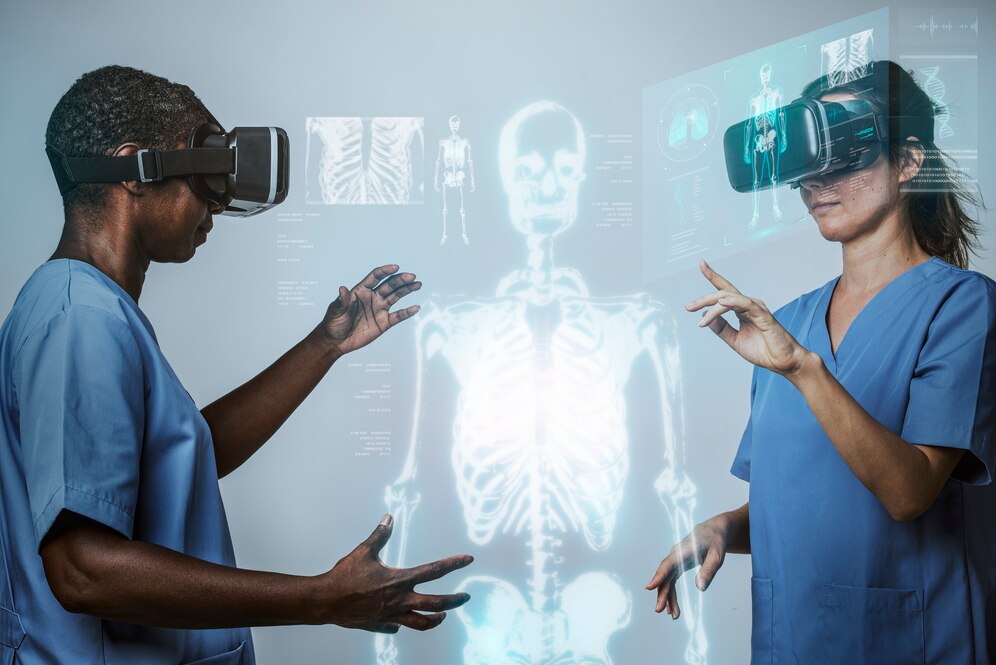In the realm of healthcare, digital transformation has emerged as a catalyst for innovation, promising enhanced patient care, streamlined processes, and improved outcomes. One of the most promising advancements in this domain is the concept of Digital Twins. These virtual replicas of physical objects or processes are now making significant waves in the healthcare industry, offering unprecedented insights and opportunities for improvement. In this article, we delve into the realm of Digital Twins in Healthcare, exploring their transformative impact on business innovation.
Understanding Digital Twins
Digital Twins represent a virtual counterpart of physical assets, processes, or systems, leveraging real-time data and advanced analytics to mirror their real-world counterparts. In healthcare, this technology enables the creation of digital replicas of patients, organs, medical devices, and even entire healthcare facilities.
Applications in Patient Care
Digital Twins hold immense potential in optimizing patient care delivery. From personalized treatment plans to predictive analytics for disease management, these virtual replicas empower healthcare providers with valuable insights into individual patient needs and preferences.
Enhancing Medical Device Development
Digital Twins play a pivotal role in accelerating the development and testing of medical devices. By simulating device performance in various scenarios and patient conditions, manufacturers can iterate designs more efficiently, ensuring safety and efficacy before market release.
Streamlining Healthcare Operations
Optimizing healthcare operations is paramount for delivering quality care efficiently. Digital Twins facilitate process optimization by modeling workflows, identifying bottlenecks, and suggesting improvements to enhance resource utilization and operational efficiency.
Improving Healthcare Infrastructure
From hospital design and layout to equipment placement and maintenance scheduling, Digital Twins offer invaluable insights for optimizing healthcare infrastructure. By simulating scenarios and analyzing data, stakeholders can make informed decisions to enhance facility efficiency and patient experience.
Predictive Maintenance for Medical Equipment
Ensuring the reliability of medical equipment is critical for uninterrupted patient care. Digital Twins enable predictive maintenance by monitoring equipment performance in real-time, detecting anomalies, and scheduling proactive maintenance interventions to prevent downtime.
Personalized Medicine Advancements
The advent of Digital Twins opens new frontiers in personalized medicine. By integrating patient-specific data, genetic information, and treatment histories, healthcare providers can develop tailored interventions that optimize efficacy while minimizing adverse effects.
Enhancing Clinical Trials
Digital Twins revolutionize the landscape of clinical trials by providing virtual platforms for testing treatments and interventions. By simulating patient responses and outcomes, researchers can optimize trial designs, accelerate recruitment, and improve trial success rates.
Addressing Data Privacy and Security
Despite their transformative potential, Digital Twins raise concerns regarding data privacy and security. Stakeholders must implement robust protocols and encryption measures to safeguard sensitive patient information and ensure compliance with regulatory standards.
Collaborative Healthcare Ecosystems
Digital Twins foster collaboration across the healthcare ecosystem, enabling seamless data sharing and interdisciplinary partnerships. By breaking down silos and promoting knowledge exchange, they empower stakeholders to collectively drive innovation and improve patient outcomes.
Digital Twins in Healthcare: Transforming Business Innovation
Digital Twins in Healthcare represent a paradigm shift in the industry, offering unparalleled opportunities for innovation and improvement. From personalized patient care to streamlined operations and infrastructure optimization, the transformative potential of Digital Twins is boundless.
FAQs
Q. What are Digital Twins in Healthcare?
Digital Twins in Healthcare are virtual replicas of physical assets, processes, or systems in the healthcare domain, leveraging real-time data and advanced analytics to mirror their real-world counterparts.
Q. How do Digital Twins enhance patient care?
Digital Twins empower healthcare providers with valuable insights into individual patient needs and preferences, enabling personalized treatment plans, predictive analytics for disease management, and optimized care delivery.
Q. What role do Digital Twins play in medical device development?
Digital Twins accelerate the development and testing of medical devices by simulating performance in various scenarios and patient conditions, ensuring safety and efficacy before market release.
Q. How can Digital Twins streamline healthcare operations?
Digital Twins optimize healthcare operations by modeling workflows, identifying bottlenecks, and suggesting improvements to enhance resource utilization and operational efficiency.
Q. What are the benefits of predictive maintenance for medical equipment?
Predictive maintenance enabled by Digital Twins ensures the reliability of medical equipment by monitoring performance in real-time, detecting anomalies, and scheduling proactive maintenance interventions to prevent downtime.
Q. How do Digital Twins contribute to personalized medicine advancements?
Digital Twins integrate patient-specific data, genetic information, and treatment histories to develop tailored interventions that optimize efficacy while minimizing adverse effects, driving advancements in personalized medicine.
Conclusion:
In conclusion, Digital Twins in Healthcare are revolutionizing business innovation, offering transformative potential across various facets of the industry. From personalized patient care to streamlined operations and infrastructure optimization, the adoption of Digital Twins heralds a new era of possibilities in healthcare delivery and management.





Comments